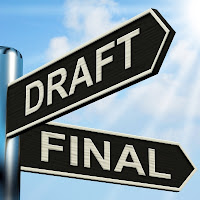Scene Blocking: What It Is, Why Do It, and How

Image courtesy of Stuart Miles Freedigitalphotos.net You're reading a fight scene in a book, and you're having trouble seeing what's happening. It's hard to follow. You keep backing up and re-reading the passage, trying to get a handle on the action. Odds are, the scene is incorrectly or poorly blocked. What Is Scene Blocking? Scene blocking looks at the geographical space in the story, identifying where the characters, objects, and events occur. The author needs to take the time to determine the layout. In some cases, authors sketch it to see how everything interacts. One of my favorite authors, C E Murphy , checks her blocking by role playing her fight scenes with her husband. That's got to be fun! Why Should You Check Your Scene Blocking? Some of the issues I've observed while critiquing others' work include a weapon in a character's hand that still holds a horse's reins or grips an elbow in pain. They never put down the reins or


